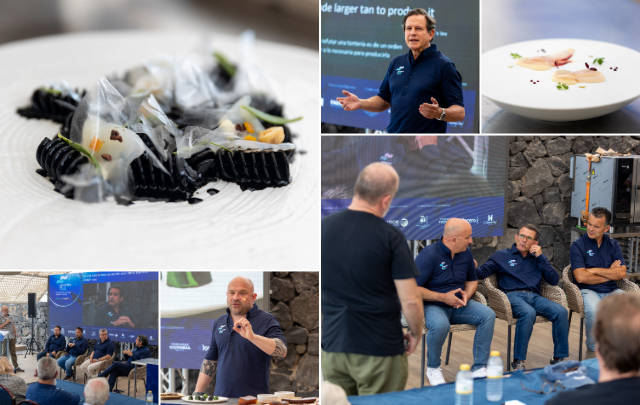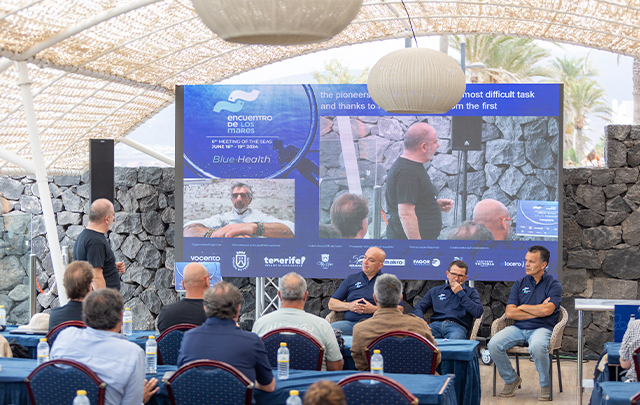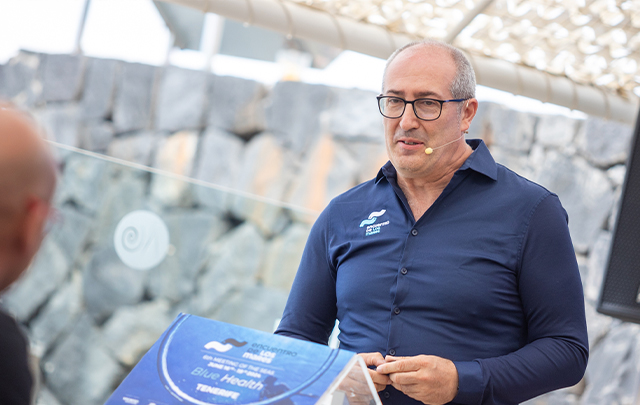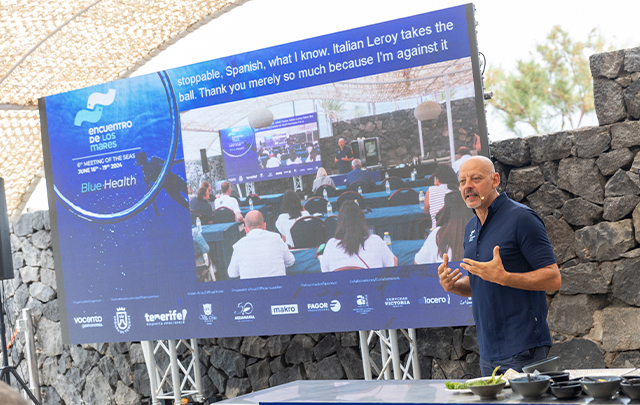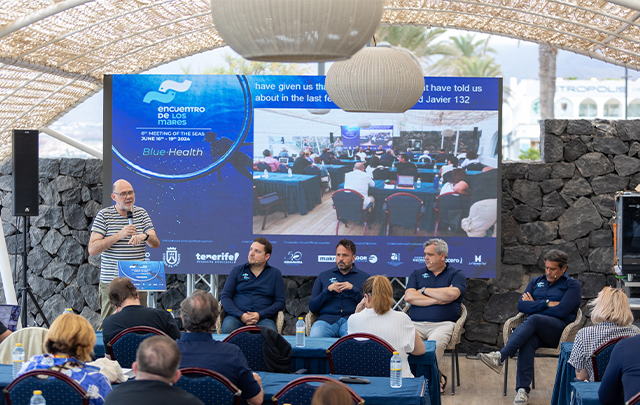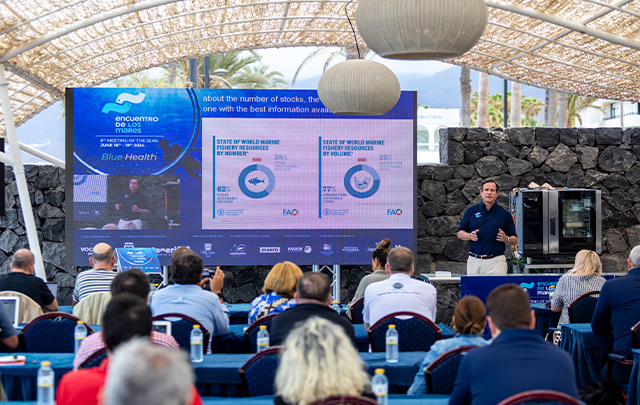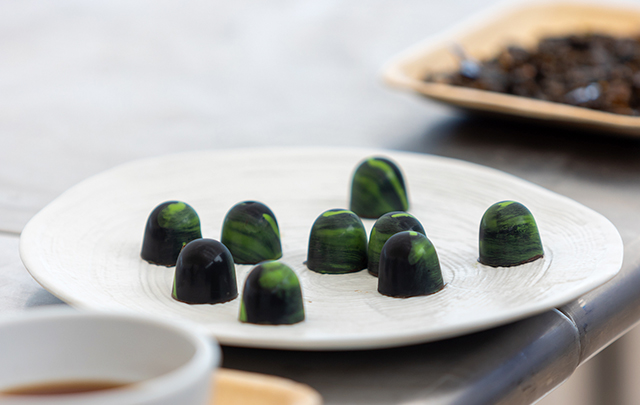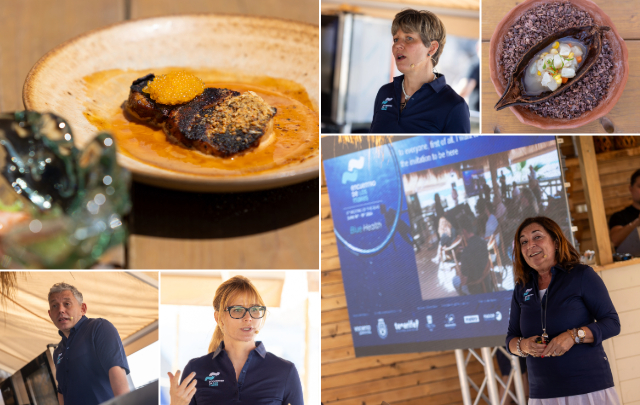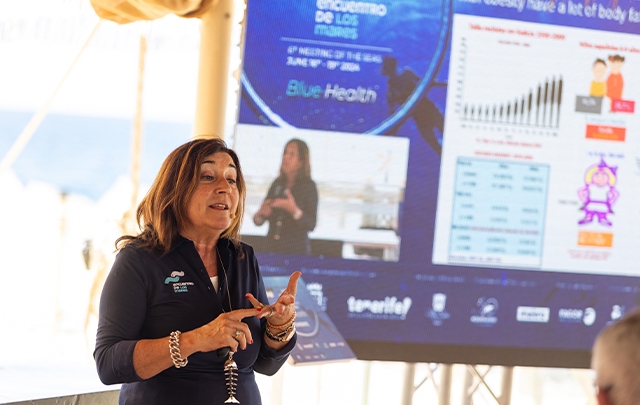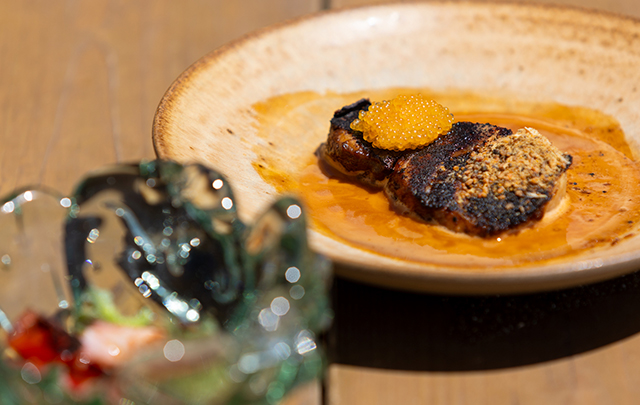News
Shells and red ochre, a link that lives on
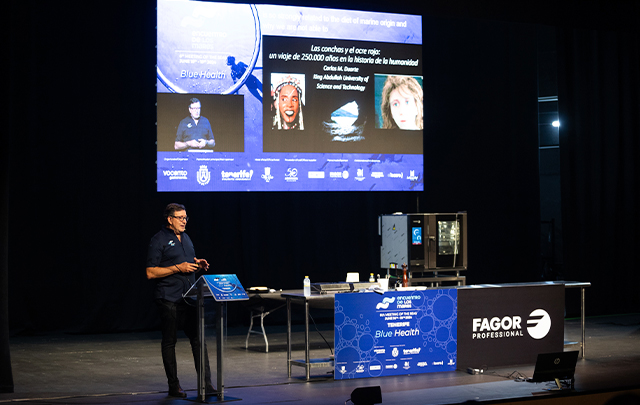
Professor Carlos Duarte explains how, for 250,000 years, this combination has been repeated in different civilisations on different continents.
Shells and red ochre: a 250,000-year journey through human history'. This was the title of the lecture given by Carlos Duarte, Research Professor at the King Abdullah University of Science and Technology (KAUST) in Saudi Arabia. The lecture took the audience in the Adeje Auditorium on a journey through a quarter of a million years to understand why our health is so closely linked to that of the oceans.
The point of departure is a small obsession of Duarte's, who noticed that in his various studies shells and red ochre always appeared, two elements that were always found together and whose explanation he became obsessed with. "The story begins on a rocky coast, with waves that, at low tide, reveal fields of seaweed and molluscs. A landscape where I spent a lot of time measuring various parameters," he began. It is in this seaweed habitat that modern man appears, "who differs from the ancients in his capacity for symbolic thought and artistic expression".
It appears in the Blombos Cave near Cape Town, 160,000 years ago: "The first traces of modern humans were discovered there because there were samples of artistic expression, red ochre powdered on shells and abalones. They used this red paste to decorate their bodies, but also to keep warm," explains Duarte. Red ochre is an iron oxide that has been appreciated throughout history by many cultures, some contemporary and some extinct (the 'redskins' of cowboy and Indian films or the Australian aborigines, for example), but the curious thing is that its mixture with shells is found in cultures all over the world that had no contact with each other. It was so highly valued that it is known to have been transported and traded.
A living link
The link between shells and red ochre is still alive, as it has been throughout history, and there are many examples that the expert used during his presentation. In the work "The Birth of Venus", the red-haired protagonist is painted with a pigment that is red ochre. Today, however, red lipsticks and make-up bases are made with haematite, which is also red ochre. There are also many cases in which these make-ups are combined with ornaments made from shells... "Once again we see that this link is always there, in all cultures," says Duarte.
But the role of these shells and red ochre is fundamental to the development of humanity. Duarte himself provided the clues. Molluscs have a high content of omega-3 fatty acids, which are essential for brain development and cognitive activities and abilities, and a quarter of a million years ago the size of the human brain accelerated enormously, allowing us to be intelligent. It is also known that the brain contains large amounts of iron, associated with ferritin, and is the human body's great energy and oxygen sink: "It's like having a 60-watt light bulb on all the time". Our brain has a red ochre core.
Fundamental to development
The expert goes on to say that "it is possible to eat red ochre with molluscs and assimilate it well", but believes that "it is also essential for reproductive health". Those artists who ate with their hands stained with red ochre certainly had an evolutionary advantage in having offspring who could inherit this artistic inclination, which is fundamental to development. Our intelligence is therefore a consequence of the artistic inclination of our ancestral mothers.
In fact, as she explains, "after giving birth, the woman comes out with a low level of omega-3 and iron because 80% of both have been passed on to the foetus. Today, reproductive success still depends on iron and omega-3".
Finally, he left us with another interesting thought, which could also serve as a basis for the rest of the meeting: "Young people are not more fragile, they have changed their diet. We need to reconnect human health with the health of the ocean.

